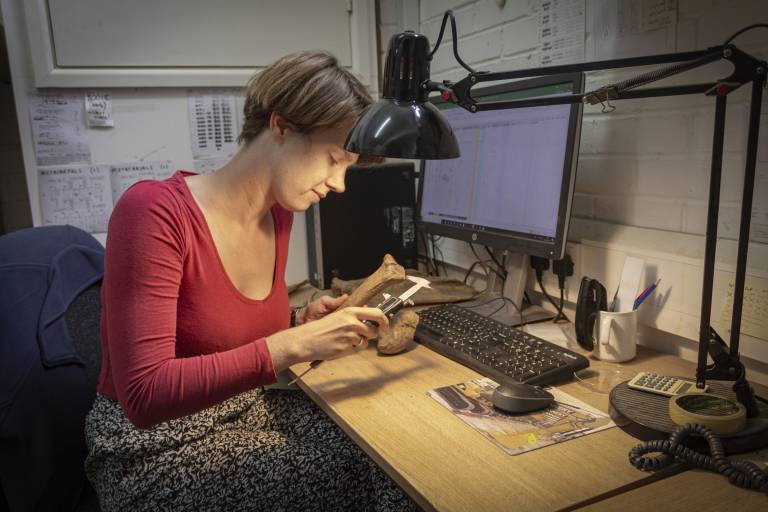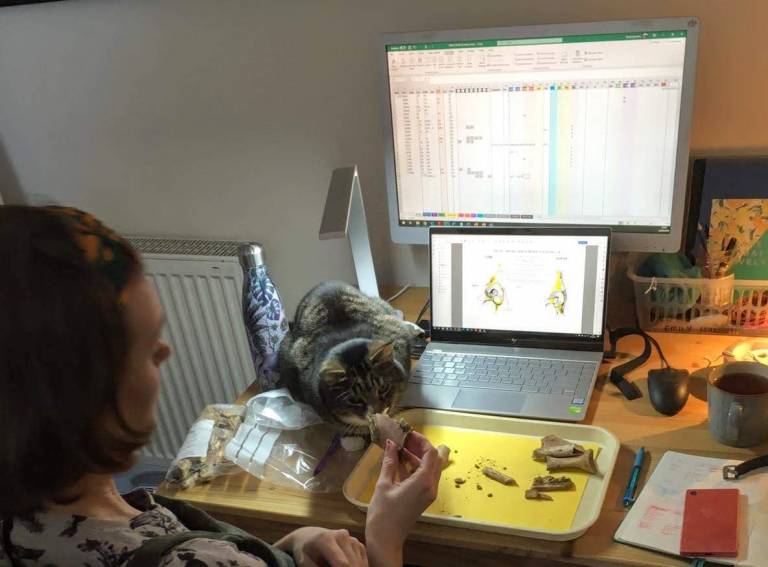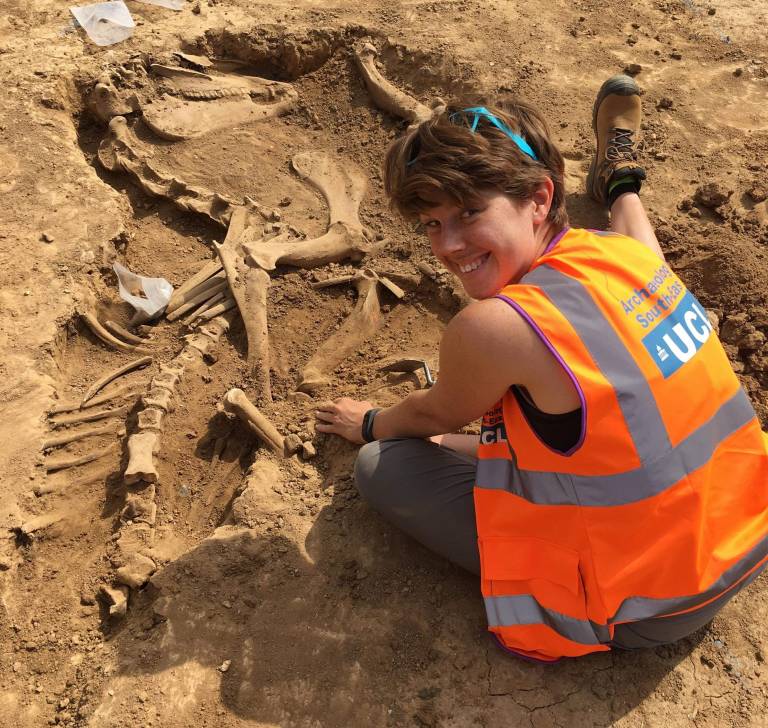ASE Takes Stock: Emily Johnson, Zooarchaeologist
7 April 2020
Emily can usually be found in the 'bone zone' in the ASE office, analysing animal bones from our site and making posts for our website and social media... like this one! Hi, I'm Emily. What am I up to now I'm working at home?

Current work and situation
I’m not furloughed, so I'm currently still doing zooarchaeological analysis but from my dining room table! I’ve got a huge pile of boxes next to me (including two complete horse skeletons) that comprise my next three weeks of work.
It’s much harder doing bone analysis from home as I can’t use our office skeletal reference collection, but I have a lot of digital resources that I can use and I brought all the equipment home that I need to do these reports to the best of my ability. And I have an enthusiastic ‘colleague’ called Mushroom to help me out!

My new helper - Mushroom the cat
I’m also continuing to run ASE’s social media accounts, which at the moment is taking a lot of my time as we’re trying to keep our followers entertained during lockdown (and now furlough). I’m posting archaeological updates, pictures of artefacts, and stories from our archaeologists working from home.
Looking back on last year
I was lucky enough to go out on site last summer to our excavations at Tye Lane in Walberton. Our team had found some animal burials and I was sent out to see if I could tell what animal they were, and then I helped excavate them too. They were two horses (we named them Romeo and Juliet), and they had been buried in the most peculiar way. Some of their body parts had been chopped off and laid next their torsos, likely in an attempt to fit the carcass of the horse in a too-small pit.

Excavating the horse burials at Walberton
My analysis is ongoing now that the horse bones are washed, dried and waiting for me in my tower of boxes I brought home from the lab! I’ll be able to tell more about them – how old they were, how big they were, whether there are any marks or modifications on the bones that could tell me about their lives and deaths. And also – why were they buried in such a strange way, and what can that tell us about people’s relationships with their animals in the late postmedieval period?
Looking forward to post-lockdown
Mostly right now, a haircut. But in terms of work I’m excited to get back to the office and see my lovely colleagues again. I’ve missed our sociable workspace and collaborations. I also really want to lay out the skeletons of Romeo and Juliet in full – there’s not space at home! I want to arrange them in two different ways – anatomically and as they were when they came out of the ground. This should help me understand the sequence of events leading up to their unusual burial as I’ll be able to see corresponding chop marks on dismembered elements.
 Close
Close

